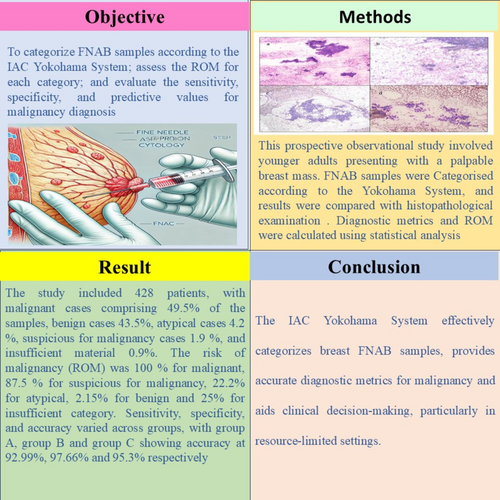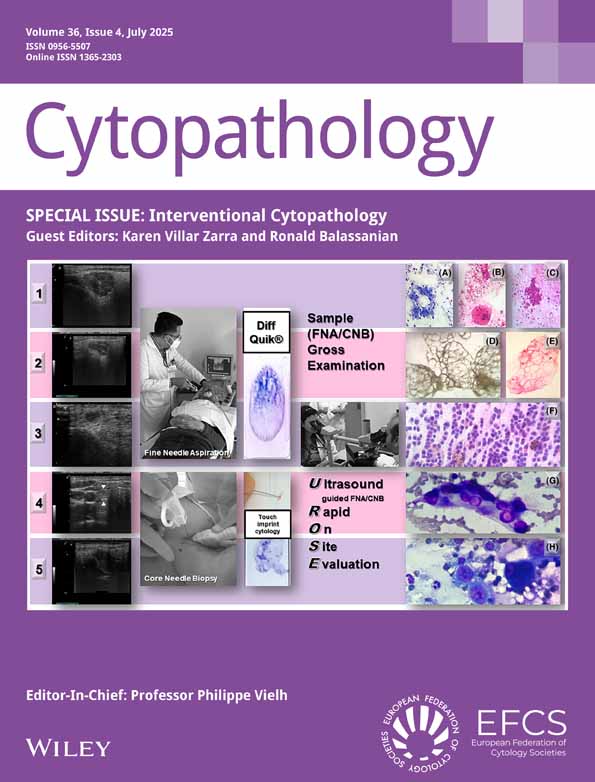Evaluating the Diagnostic Impact of the IAC Yokohama System for Breast Fine Needle Aspiration Biopsy Cytopathology: A Prospective Institutional Study
Funding: The authors received no specific funding for this work.
ABSTRACT
Introduction
Fine Needle Aspiration Biopsy (FNAB) of the breast is a widely used diagnostic tool for detecting breast lesions, offering high sensitivity and positive predictive value. The International Academy of Cytology (IAC) established the Yokohama System in 2016 to standardise reporting of breast FNAB.
Objective
To categorise FNAB samples according to the IAC Yokohama System, assess the ROM for each category and evaluate the sensitivity, specificity and predictive values for malignancy diagnosis.
Methods
This prospective observational study involved predominantly younger adults with the majority presenting with a palpable breast mass. FNAB samples were collected, stained and examined microscopically. Categories were assigned according to the Yokohama System, and the results were compared with histopathological examination (HPE). Diagnostic metrics and ROM were calculated using statistical analysis.
Results
The study included 428 patients, with malignant cases comprising 49.5% of the samples, benign cases 43.5%, atypical cases 4.2%, suspicious for malignancy cases 1.9% and insufficient material 0.9%. The risk of malignancy (ROM) was 100% for malignant, 87.5% for suspicious for malignancy, 22.2% for atypical, 2.15% for benign and 25% for the insufficient category. Sensitivity, specificity and accuracy varied across groups, with group A, group B and group C showing accuracy at 92.99%, 97.66% and 95.3%, respectively.
Conclusion
The IAC Yokohama System effectively categorises breast FNAB samples, provides accurate diagnostic metrics for malignancy and aids clinical decision-making, particularly in resource-limited settings.
Graphical Abstract
Conflicts of Interest
The authors declare no conflicts of interest.
Open Research
Data Availability Statement
All data generated or analysed during this study are included in this article. Further details are available from the corresponding author upon reasonable request.





